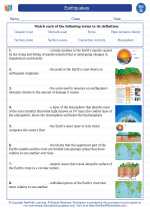Earthquakes -> soil
Soil
Soil is a complex and dynamic natural resource that forms at the interface of the lithosphere, hydrosphere, atmosphere, and biosphere. It is the foundation for terrestrial ecosystems and plays a crucial role in supporting plant growth, regulating water and nutrient cycles, and providing habitat for a diverse range of organisms.
Composition of Soil
Soil is composed of mineral particles, organic matter, water, and air. The mineral particles are derived from the weathering of rocks and minerals, and they vary in size from clay (smallest), to silt, to sand (largest). Organic matter in soil includes decomposed plant and animal materials, as well as living organisms such as earthworms, insects, and microorganisms. The water and air in soil provide the necessary medium for biological and chemical processes to occur.
Formation of Soil
Soil formation, or pedogenesis, is a complex process influenced by factors such as parent material, climate, organisms, topography, and time. Over time, rock is broken down into smaller particles through physical, chemical, and biological weathering processes. These particles mix with organic matter to form the various soil horizons, or layers, that are characteristic of mature soils.
Soil Properties
Soils can be characterized by their texture (proportions of sand, silt, and clay), structure (arrangement of soil particles into aggregates), color, pH, and fertility. These properties influence the soil's ability to retain water, support plant growth, and provide a habitat for organisms.
Soil Conservation
Human activities such as agriculture, deforestation, and urbanization can lead to soil degradation and erosion. Implementing soil conservation practices, such as terracing, contour plowing, and crop rotation, can help maintain soil fertility and prevent the loss of valuable topsoil.
Study Guide
- Describe the components of soil and their roles in soil formation and function.
- Explain the processes involved in soil formation and the factors that influence them.
- Compare and contrast the properties of different soil types, including texture, structure, color, pH, and fertility.
- Discuss the impact of human activities on soil conservation and the measures that can be taken to prevent soil degradation and erosion.
[Soil] Related Worksheets and Study Guides:
.◂Science Worksheets and Study Guides Seventh Grade. Earthquakes

 Activity Lesson
Activity Lesson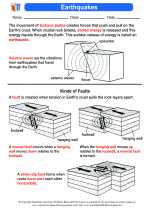
 Worksheet/Answer key
Worksheet/Answer key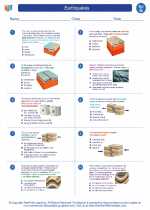
 Worksheet/Answer key
Worksheet/Answer key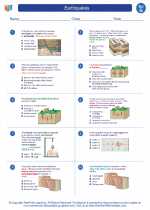
 Worksheet/Answer key
Worksheet/Answer key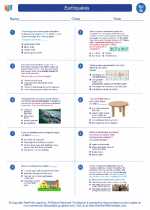
 Worksheet/Answer key
Worksheet/Answer key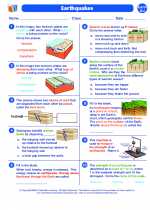
 Worksheet/Answer key
Worksheet/Answer key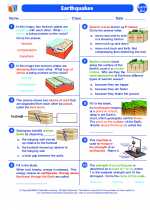
 Vocabulary/Answer key
Vocabulary/Answer key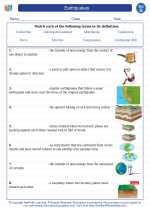
 Vocabulary/Answer key
Vocabulary/Answer key
 Vocabulary/Answer key
Vocabulary/Answer key
 Vocabulary/Answer key
Vocabulary/Answer key
 Vocabulary/Answer key
Vocabulary/Answer key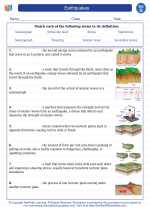
 Vocabulary/Answer key
Vocabulary/Answer key
 Vocabulary/Answer key
Vocabulary/Answer key